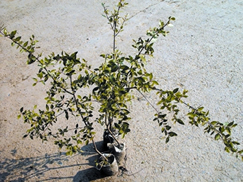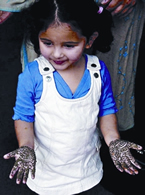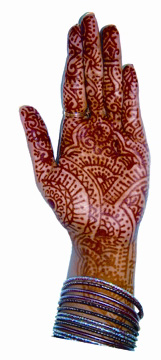Mehendi

Mehendi (mendi, menhdi) a tropical shrub (Lawsania inermis, henna) having small pink, red or white flowers; reddish dye from its shoots and leaves, especially used to colour hair, palms and fingers. As a beautification media, mehendi was in existence from ancient times. In Sanskrit texts, mendhika, appears both as a dyeing as well as a medicinal shrub. In the works of Kalidas, mehendi has been mentioned as a garden beauty and a fencing shrub. The Arabs were, and still are, particularly fond of mehendi. In Bengal and now in Bangladesh, mehendi has been always very popular.


Mehendi is widely used as a hair dyeing agent. Children, men and women decorate their hands and fingers with colourful patterns of mehendi dye during Eids and Pujas, marriages and other religious and social festivals. Immediately before any festival, the ritual of mehendi decoration begins. On the eve of the marriage ceremony brides are given a special bath preceded by decorating her fingers, hands and limbs with mehendi colours.
In normal social and religious ceremonies, mothers and sisters make a paste of the mehendi leaves at home and all the members of the family, particularly females, get together and assist each other in decorating their hands, and often feet, with manifold designs and patterns. Now processed mehendi paste and mehendi decoration molds are available commercially. It has become so popular now that organised competitions among the mehendi designers are occasionally held drawing considerable numbers of spectators of all ages and ranks. [Asha Islam]
